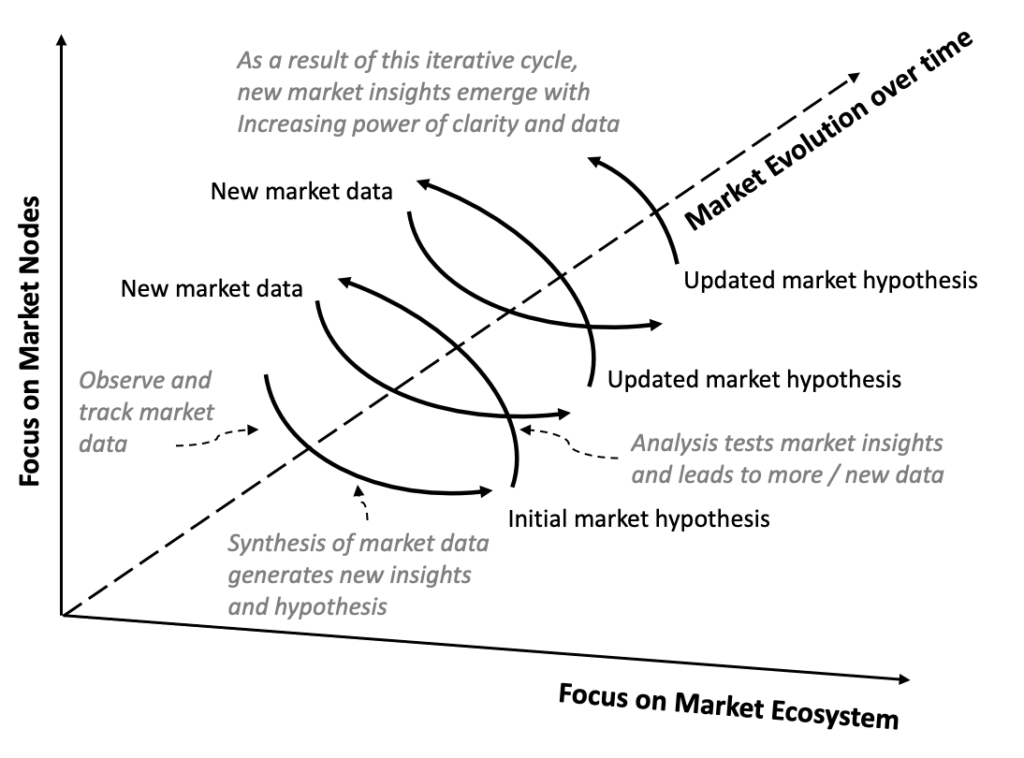Today’s technology markets are evolving at an ever-increasing rate, making it difficult to get market insights and adapt quickly.
New startups and new business models are disrupting established markets led by incumbents. Partnerships, mergers and acquisitions and venture capital investments are redefining the competitive and market landscape faster than most can track.
This accelerating change means it is no longer possible to stay informed, assess and adapt your growth strategy by simply following a few analysts or industry sources in an ad-hoc approach.
How to Get Market Insights in 5 Steps
To track, understand and develop a successful growth strategy, you need the ability to ingest and process aggregated market and competitive intelligence every day. Here’s how to get to market insights and share them across your leadership team.
1. Define your target market and relevant news feeds.
While it seems straightforward, identifying and agreeing on your core market and how it is segmented will guide the focus, context and reach of your market insights. Start at too high a level and you’ll waste time generating low-impact insights.
For example, you may think your core market is IT operations, but sharpening your focus to your specific segment within that market — say, application performance management or, better yet, observability — enables focused, relevant analysis. Now, with a narrow focus on your specific market segment, identify market leaders, competitors and comparators, and then curate the most valuable news and information sources that feed your ability to create sharper, high-impact market insights.
2. Identify adjacent markets and sources of innovation.
With an agreed definition of your target market and segments, expand your scope to identify adjacent markets and new innovations of interest. Successful growth in one segment typically includes integrating, supporting or complementing products in adjacent spaces.
In observability, for example, identifying adjacent innovations across DevOps or machine learning segments can help broaden the scope of your market insights, thus creating new opportunities for growth. It is helpful to think about these adjacent, related or relevant markets in terms of the value stack or ecosystem that is important to the customer.
3. Define shared market insights.
The goal of defining and continually tracking your market and your position in market segments is ultimately to build a set of insights that you and your leadership team can share and test. Do you all have a common understanding of what is happening? Are you aligned on the implications for you and your company’s growth strategy?
Markets evolve and change over time. Your market insights and growth strategy need to evolve and change, too. The cycle of tracking new market data, synthesizing it to update your market hypothesis, and then testing it through continued analysis is an ongoing process. Think of it as a market insight cycle.

By aggregating, sharing and iterating on how you define your market and its critical trends and events, the team builds a shared perspective of the market and how it is evolving.
4. Track, share and evolve your growth strategy.
With today’s markets changing and evolving at an accelerating pace, you need to continually track news, innovations and competitive market events to understand how they shape and impact your strategy for growth.
As your core and adjacent markets evolve, so should you. How is market adoption changing? Where are you positioned in the market and competitive ecosystem? Are you interconnected to a growing or consolidating ecosystem?
5. Map out your market and your growth strategy.
A helpful way to ensure alignment around shared market insights and their implications is to map out your market ecosystem and growth strategy. Creating a market map clarifies your market insights and enables the team to explore how the market is evolving, how you relate to market players in the ecosystem and how your strategy should evolve with market changes.
Fuel Your Market Insights
There is so much data available about companies and markets, it’s no wonder that many startups don’t know how to get market insights that can make a difference. York IE’s Fuel platform provides digestible data and insights so busy entrepreneurs and operators can track and analyze their markets, generating insights to inform and support their growth strategies.
To make market and competitive intelligence part of your daily workflow, visit fuel.york.ie/signup.



